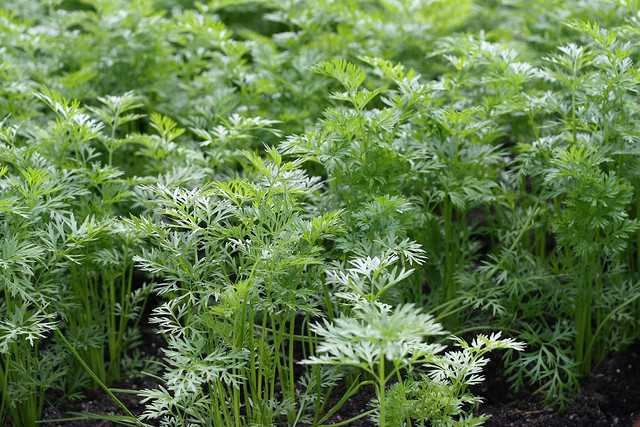
Carrots are a very popular root vegetable. They are resistant to most pests and diseases, are easy to grow in sandy soil, and are a good late season crop which can tolerate frost. Not all of them are orange, varieties vary in color from white to purple.
If you’re wondering how to grow carrots, then you should know that they grow best in cool temperatures like those that occur in late fall and early spring. The daytime temperatures should be averaging 75 degrees F and the night temperature should be dropping to about 55 degrees for optimum growth. Carrots will grow in flower beds and in small gardens, and can accept a little bit of shade, too.
Types
– Miniature carrots are good for heavy clay soil. They have small, shallow roots which are usually pretty sweet.
– Danvers carrots make excellent juice, and the sturdy roots store good, as well.
– Nantes are easy to grow. They grow fast and adapt to many climates and soils.
– Imperator carrots are long and need sandy soil to thrive.
– Chantenay carrots have stocky roots which become sweeter as the soil cools in the fall.
When to plant
Sow carrot seeds in fertile, well-worked soil in the spring, about 2 weeks before your last frost date. If you are living in a place with cool climate, continue planting every 3 weeks until midsummer. Start sowing seeds for fall and winter carrots in summer, ten to twelve weeks before your average first fall frost. Most gardeners plant them after their spring peas are finished.
How to grow
Loosen the soil to at least twelve inches deep in order to prepare the planting bed. Thoroughly mix in a half-inch of vermicompost or a one-inch layer of mature compost. Sow your seeds about two inches apart and a quarter inch deep, in rows spaced at least ten inches apart; this vegetable does well in double or even triple rows. Now, thin seedlings to four to six inches apart, depending on the mature size of the variety.
Harvest and store
Dig or pull carrots which are sown in spring, when roots show rich color and reach mature size. As carrots mature their taste improves, however, don’t leave mature carrots in warm soil if it is not necessary. Carrots which are sown in summer that mature in cool fall soil can be left in the ground longer. However, they should be dug before the ground freezes to preserve their quality. Once you have dug them, remove tops to prevent moisture loss, rinse clean, and then store in a refrigerator. Most varieties keep for a few months in the fridge.
Save seeds
Carrots are biennial and for that reason won’t flower and make seed until the second year. Open-pollinated carrots in cold climates, which are kept in cold storage during winter can be replanted in early spring for seed production purposes. Collect the seed clusters in a paper bag when they have ripened to brown. Allow them to dry for one week indoors before you crush the clusters and gather the seeds. Make sure to discard the smallest seeds. The largest seeds can be stored in a cool, dry place for up to 3 years.